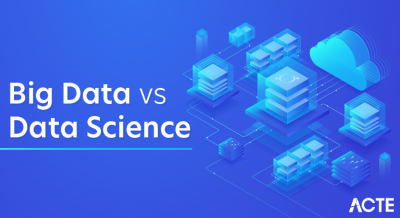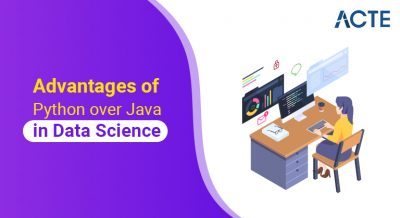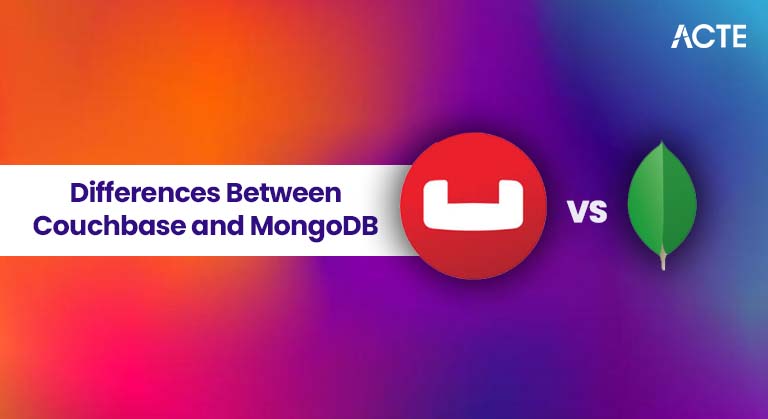
- Overview of Couchbase and MongoDB
- Architecture and Design
- Data Modeling Differences
- Query Languages: N1QL vs MQL
- Storage and Indexing
- Replication and Sync
- Performance Benchmarks
- Offline and Mobile Support
- Deployment and Scaling
- Use Case Comparison
- Pros and Cons
- Conclusion
Overview of Couchbase and MongoDB
Couchbase and MongoDB are two prominent NoSQL databases widely used in modern application development. Both offer flexible, document-oriented storage, scalability, and performance, but they differ in architecture, data modeling approaches, operational design, and best-fit scenarios. Understanding their distinctions are crucial when choosing the right database solution for your project or business application. Understanding the difference between Couchbase and MongoDB is crucial when choosing the right database solution.
Are You Interested in Learning More About Database? Sign Up For Our Database Online Training Today!
Architecture and Design
Couchbase is built with a memory-first architecture and is optimized for sub-millisecond data access. It blends the strengths of a key-value store with document-oriented JSON storage. Its peer-to-peer distributed model ensures all nodes in the cluster are equal, eliminating the need for a master node and increasing fault tolerance and One clear difference between Couchbase and MongoDB lies in their architecture. Couchbase’s architecture is modular, allowing services like indexing, querying, and analytics to be separated and scaled independently.
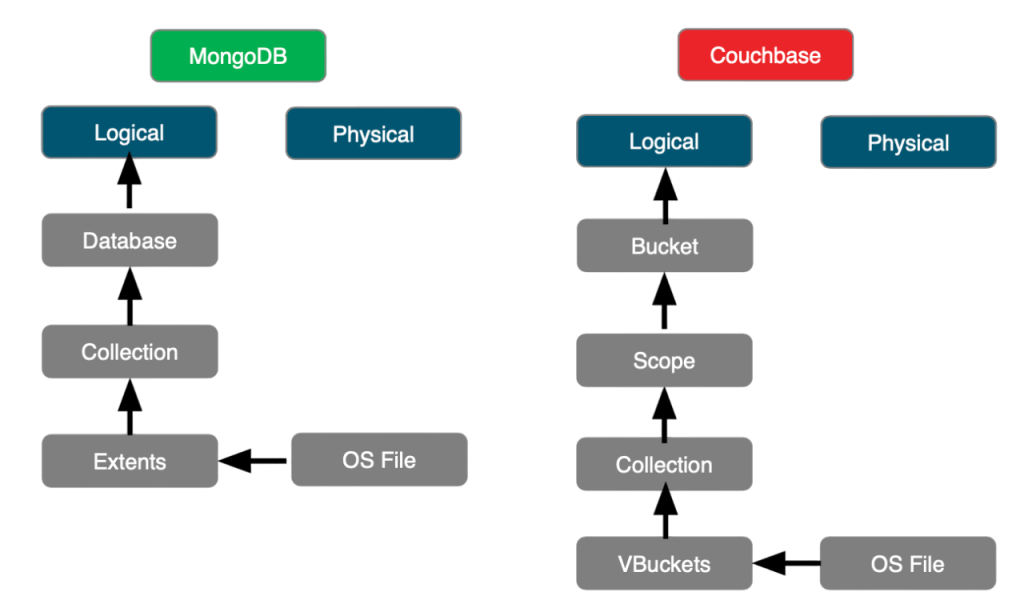
MongoDB, by contrast, adopts a primary-secondary replication model. The primary node handles write operations, while read operations can be distributed among secondaries. Though this model can lead to eventual consistency under specific conditions, MongoDB’s ease of use and document-centric design have made it a favorite among developers. MongoDB favors rapid development and prototyping, with a focus on simplicity and powerful querying capabilities.
Data Modeling Differences
- In MongoDB, documents are stored in BSON (Binary JSON) format, enabling the storage of rich, nested data structures. This format supports flexible schema designs, allowing developers to build models that adapt as applications evolve. Collections in MongoDB serve as containers for documents, much like tables in relational databases.
- Couchbase stores documents in pure JSON format and emphasizes denormalized data modeling for performance optimization. It encourages developers to embed related data within a single document, reducing the need for complex joins.
- Couchbase documents are grouped in buckets, each of which can have multiple scopes and collections, providing multi-tenancy and This showcases the difference between MongoDB and Couchbase in how each database structures and accesses data.
- Couchbase introduced N1QL (Non-First Normal Form Query Language), a powerful SQL-like language tailored for querying JSON data. N1QL allows developers to perform familiar operations such as JOINs, subqueries, and aggregations. A major difference between Couchbase and MongoDB query capabilities lies in JOIN support.
- MongoDB uses MQL (MongoDB Query Language), which is a JSON-based syntax for querying and manipulating documents. MQL is expressive and tailored for developers working directly with JSON data. While MQL doesn’t natively support joins, MongoDB offers the $lookup operator for performing left outer joins during aggregation.
- Couchbase excels in offline-first use cases. Couchbase Lite is an embedded NoSQL database for mobile and edge devices, supporting full CRUD operations and synchronization with Sync Gateway. This makes it a robust solution for applications needing local data access without constant connectivity.
- MongoDB provides Realm for mobile application development. Realm supports offline functionality, real-time data synchronization, features that impact Couchbase vs MongoDB performance in offline scenarios and edge-to-cloud data movement. It integrates with MongoDB Atlas, allowing seamless backend support for mobile applications.
- Real-time analytics and dashboards
- High-speed caching and session management
- Offline-first mobile and IoT applications
- Low-latency user experiences and personalization
- Content and asset management systems
- Product catalogs and metadata storage
- Real-time analytics with aggregation pipelines
- Applications with evolving or flexible data schemas
- Flexible schema design
- Powerful aggregation and transformation features
- Rich indexing and querying capabilities
- Strong community and ecosystem
- Single-primary write model can create bottlenecks
- Performance tuning needed at scale
- Limited multi-document transaction support (historically)
- Memory-first architecture with built-in cache
- Real-time sync and mobile support via Couchbase Lite
- Flexible scaling of services
- Cross-data-center replication for geo-distributed apps
- The learning curve for N1QL and XDCR
- More operational complexity than MongoDB
- Smaller community and ecosystem
To Explore Database in Depth, Check Out Our Comprehensive Database Online Training To Gain Insights From Our Experts!
Query Languages: N1QL vs. MQL
Storage and Indexing
MongoDB utilizes the WiredTiger storage engine by default, which supports features such as compression, document-level locking, and journaling. MongoDB provides diverse indexing options, including single-field, compound, geospatial, hashed, and text indexes. Couchbase integrates an in-memory storage engine with asynchronous persistence to disk. This setup provides fast reads and writes while ensuring data durability.
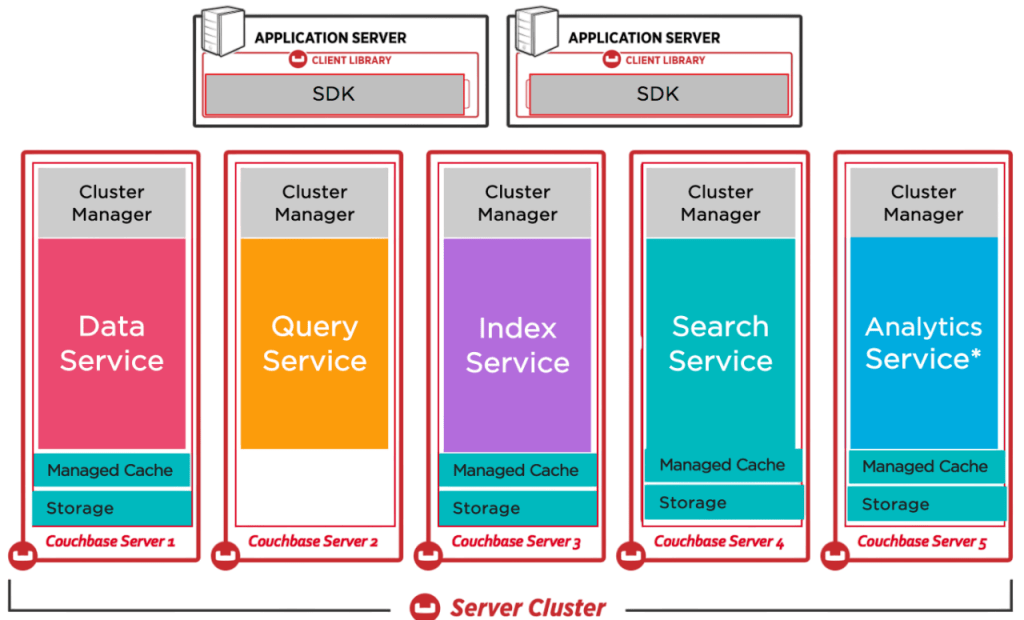
Couchbase’s indexing framework supports Global Secondary Indexes (GSI) and Full Text Search (FTS), which can be run on separate nodes to improve query performance. This outlines a major difference between Couchbase and MongoDB in how they manage data persistence and indexing.
Replication and Sync
The difference between MongoDB and Couchbase becomes evident in how replication is handled across clusters. MongoDB achieves high availability through replica sets. A replica set consists of a primary and multiple secondaries. In case of primary failure, a secondary is automatically elected as the new primary. MongoDB also supports multi-document ACID transactions, providing consistency for complex operations. Couchbase offers intra-cluster replication and XDCR (Cross Data Center Replication), which enables replication between geographically dispersed clusters. This is particularly useful for globally distributed applications. Couchbase Sync Gateway, when paired with Couchbase Lite, allows real-time sync and offline access for mobile applications.
Performance Benchmarks
Couchbase vs MongoDB performance varies widely depending on the workload and use case. Performance varies based on workload, infrastructure, and tuning. Couchbase is known for its low-latency performance due to its memory-first design and built-in caching. It is well-suited for applications requiring real-time data processing, such as online gaming, ad targeting, and personalized content delivery. MongoDB also delivers strong performance, particularly in analytics and aggregation-heavy workloads. Its performance benefits from efficient data structures, indexes, and in-memory processing. In scenarios involving complex queries, MongoDB aggregation framework can outperform traditional relational databases.
Want to Learn About Database? Explore Our Database Interview Questions and Answers Featuring the Most Frequently Asked Questions in Job Interviews.
Offline and Mobile Support
Deployment and Scaling
Couchbase allows multi-dimensional scaling, letting users scale query, index, and data services independently. This reduces resource contention and enables fine-tuned performance. Deployment can be on-premises, in virtual machines, containers, or cloud environments like AWS, Azure, and GCP. MongoDB supports horizontal scaling through auto-sharding, which distributes data across shards based on a shared key. MongoDB Atlas offers a fully managed cloud platform with built-in automation for scaling and backups and adds another layer to the difference between MongoDB. This platform simplifies cloud-native development and operations.
Use Case Comparison
These factors define Couchbase vs MongoDB performance strengths across different industries.
Pros and Cons
MongoDB Pros:
MongoDB Cons:
Couchbase Pros:
Couchbase Cons:
Each database has its strengths and limitations, contributing to the overall difference between MongoDB and Couchbase.
Conclusion
Couchbase and MongoDB each bring powerful features to the table, catering to different architectural needs. Couchbase’s high throughput, integrated caching, The difference between Couchbase and MongoDB ultimately comes down to workload type, data model flexibility, and mobile capabilities, making it ideal for performance-critical applications. MongoDB’s flexible data model, aggregation framework, and developer tools make it an excellent choice for agile development and content-driven platforms. Choosing between them should be guided by your application’s specific needs in performance and scalability when comparing Couchbase vs MongoDB performance offline access, query complexity, and operational simplicity when comparing Couchbase vs. MongoDB. A thoughtful evaluation aligned with technical and business goals will help you leverage the best of what each has to offer.


